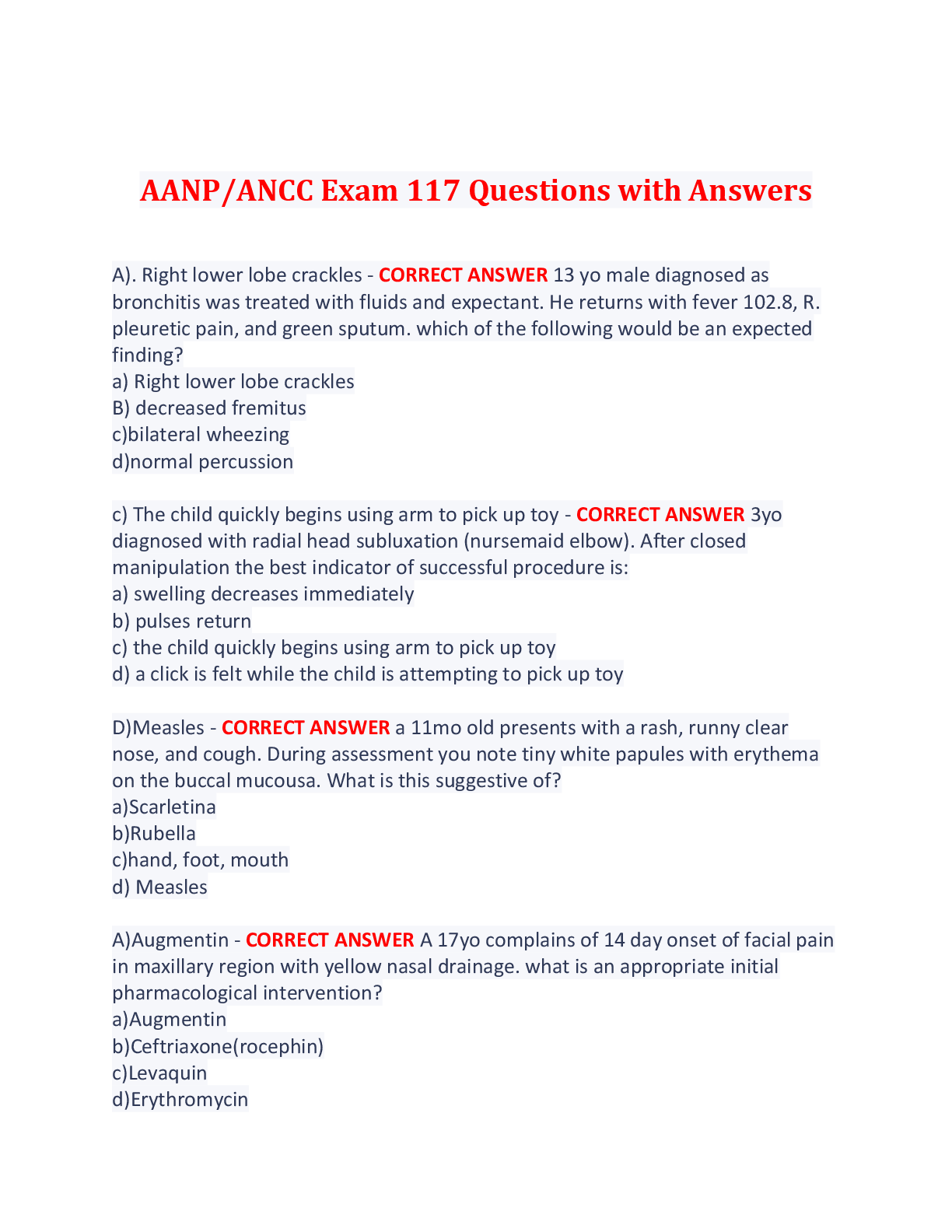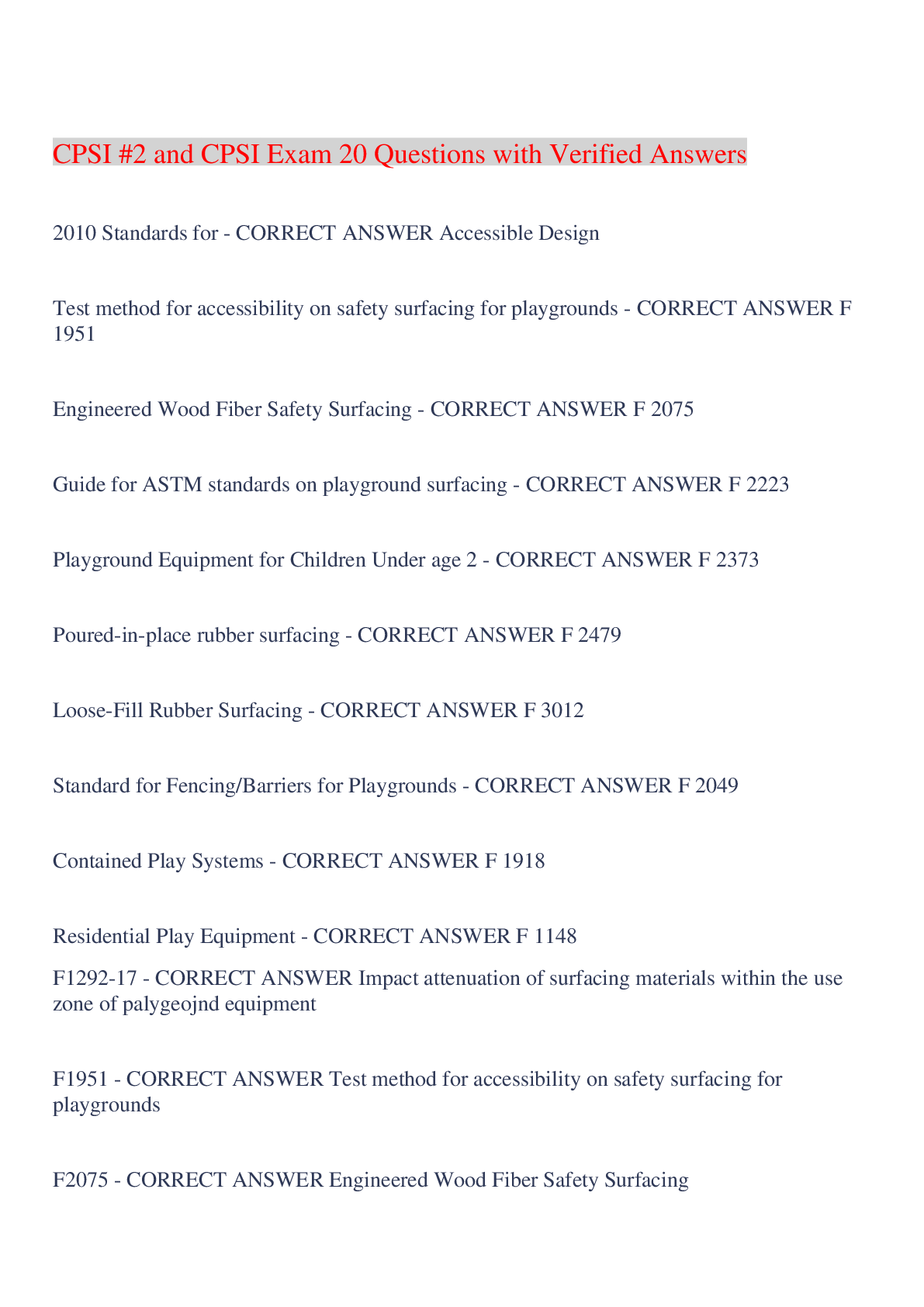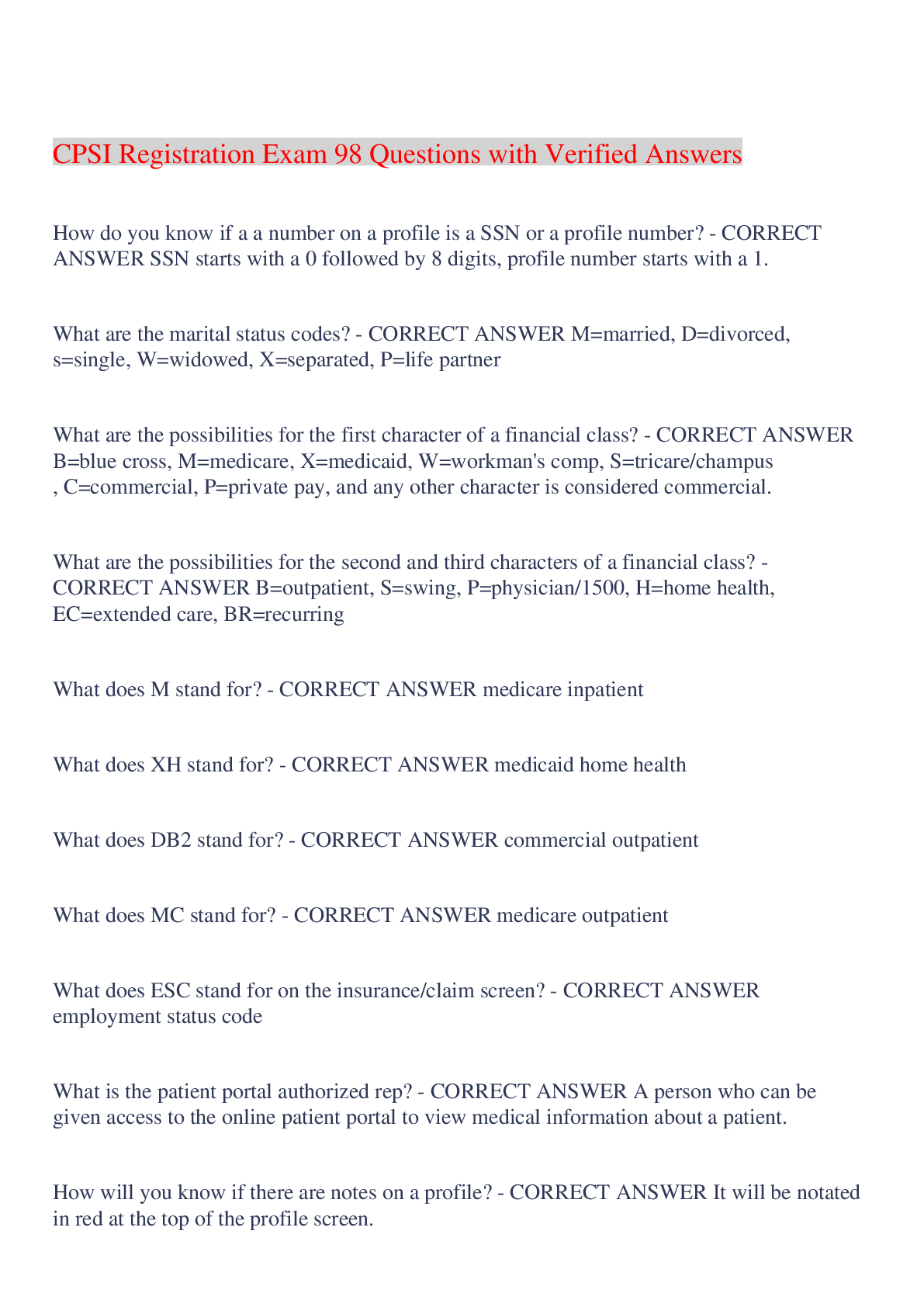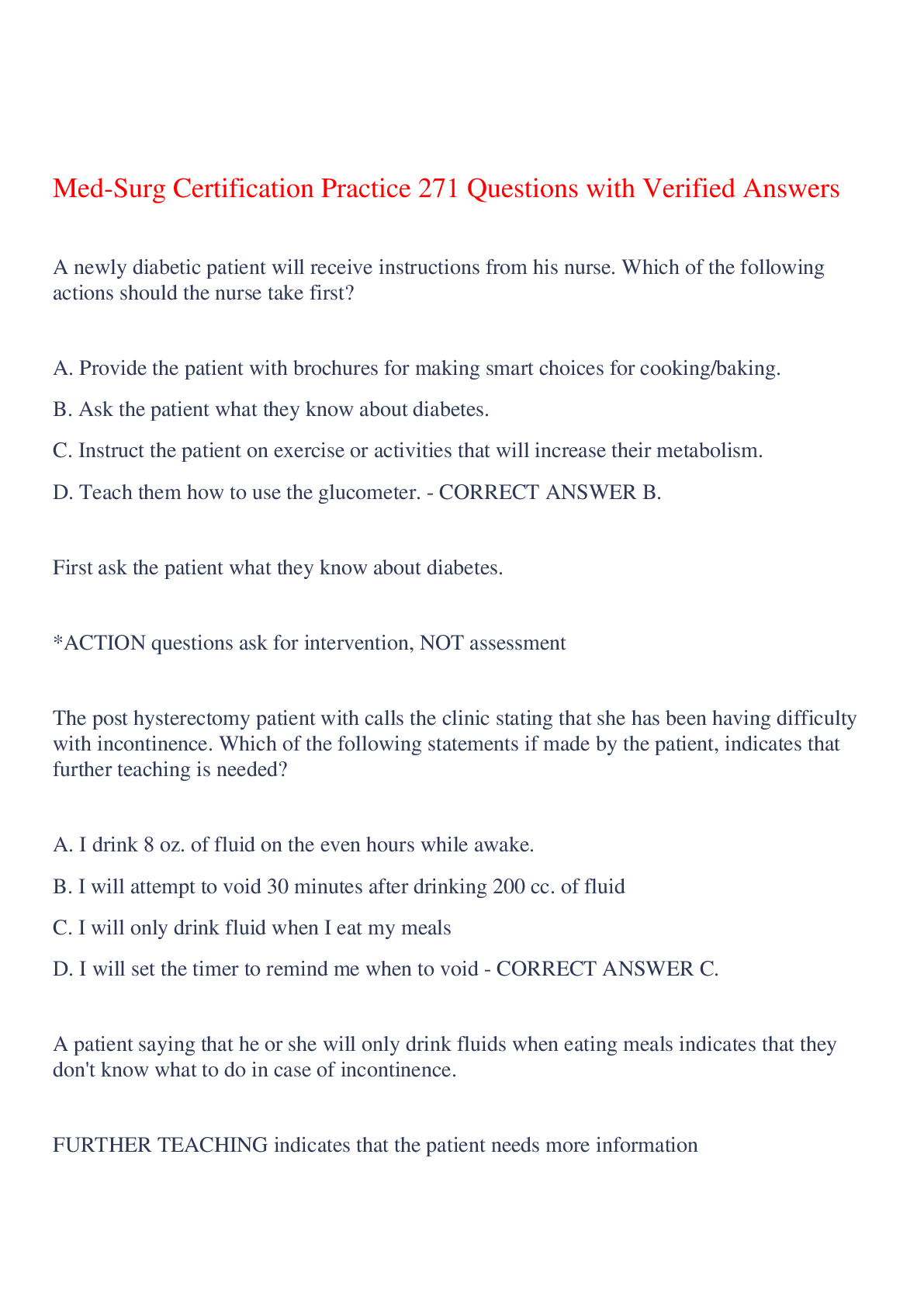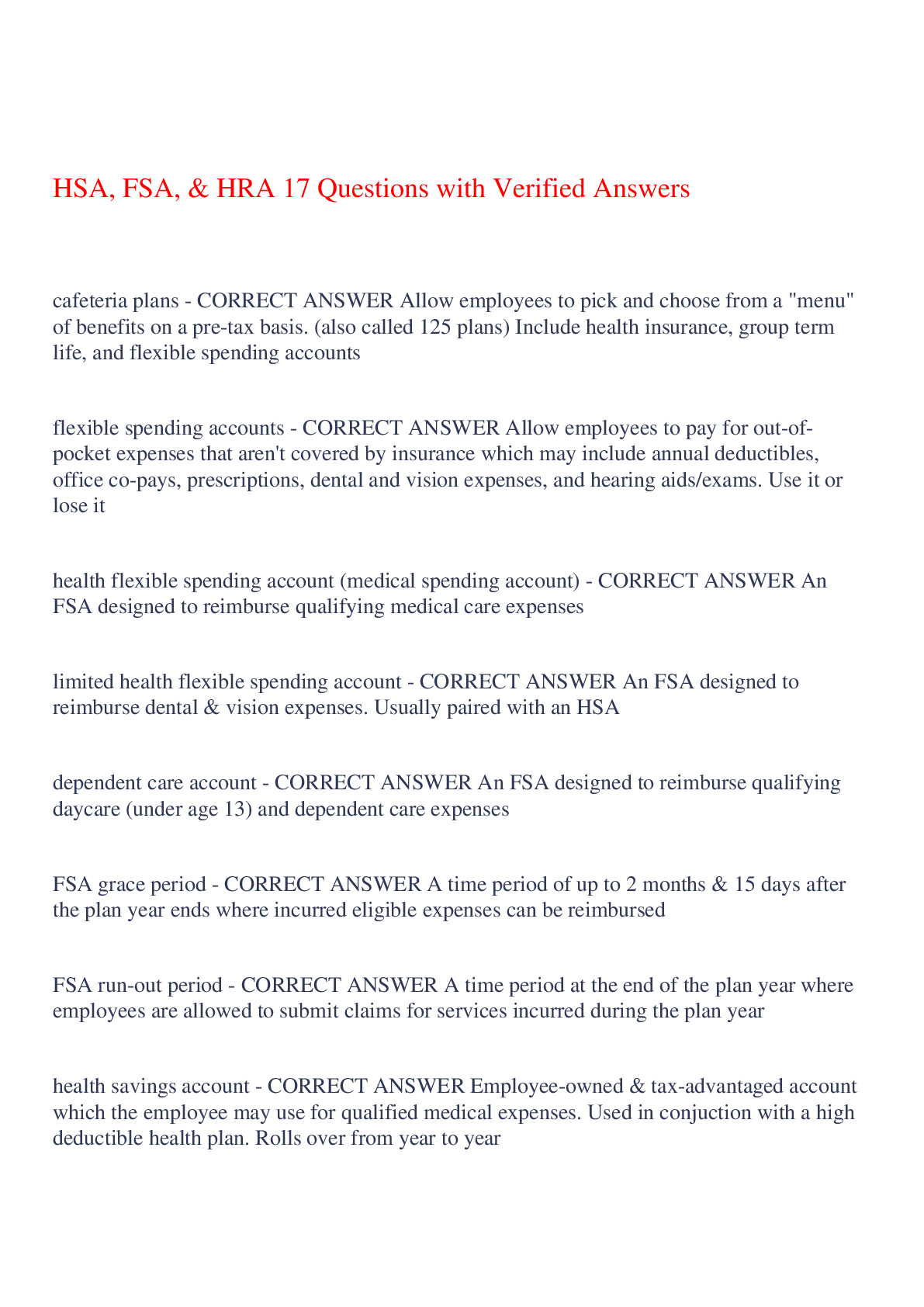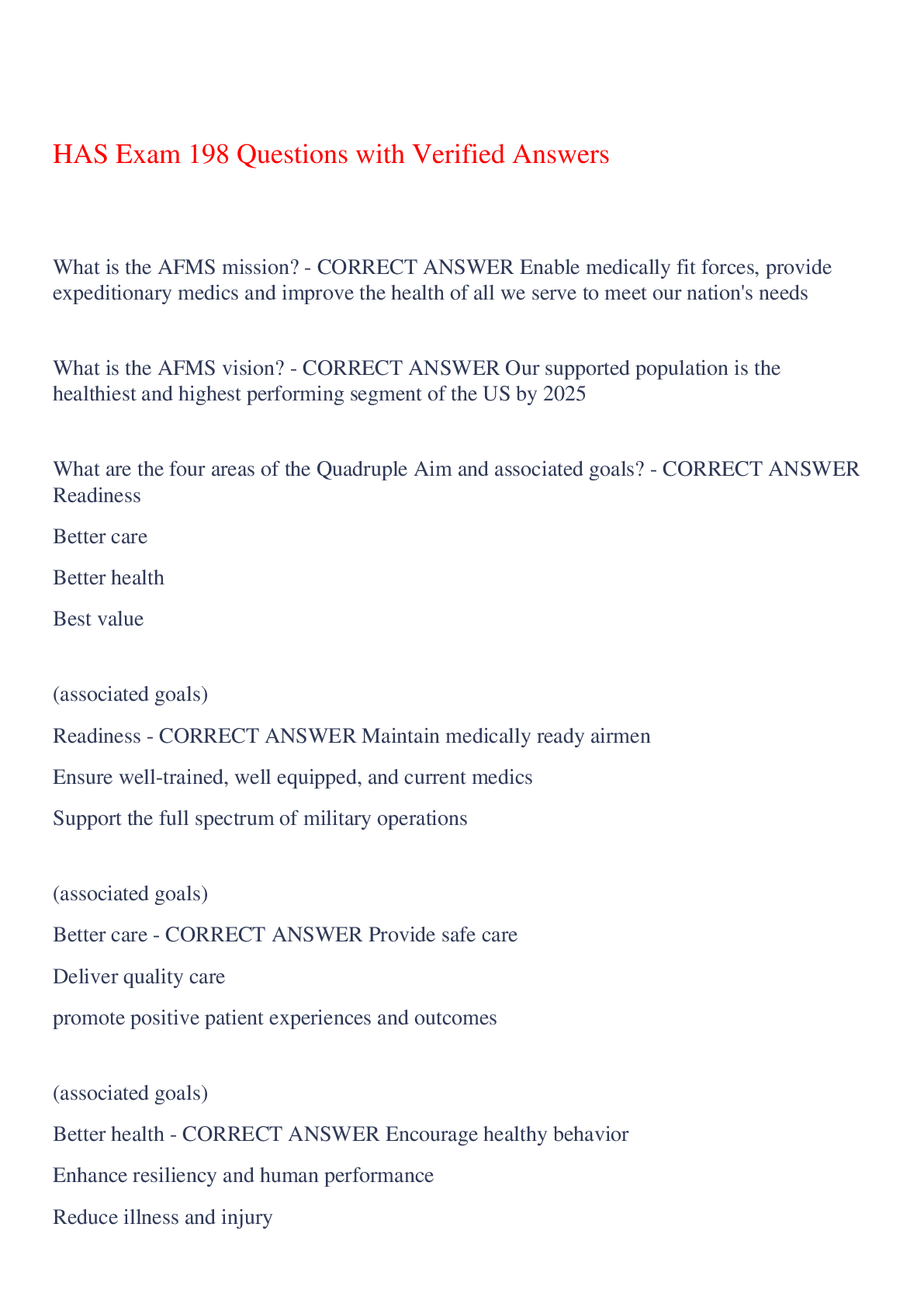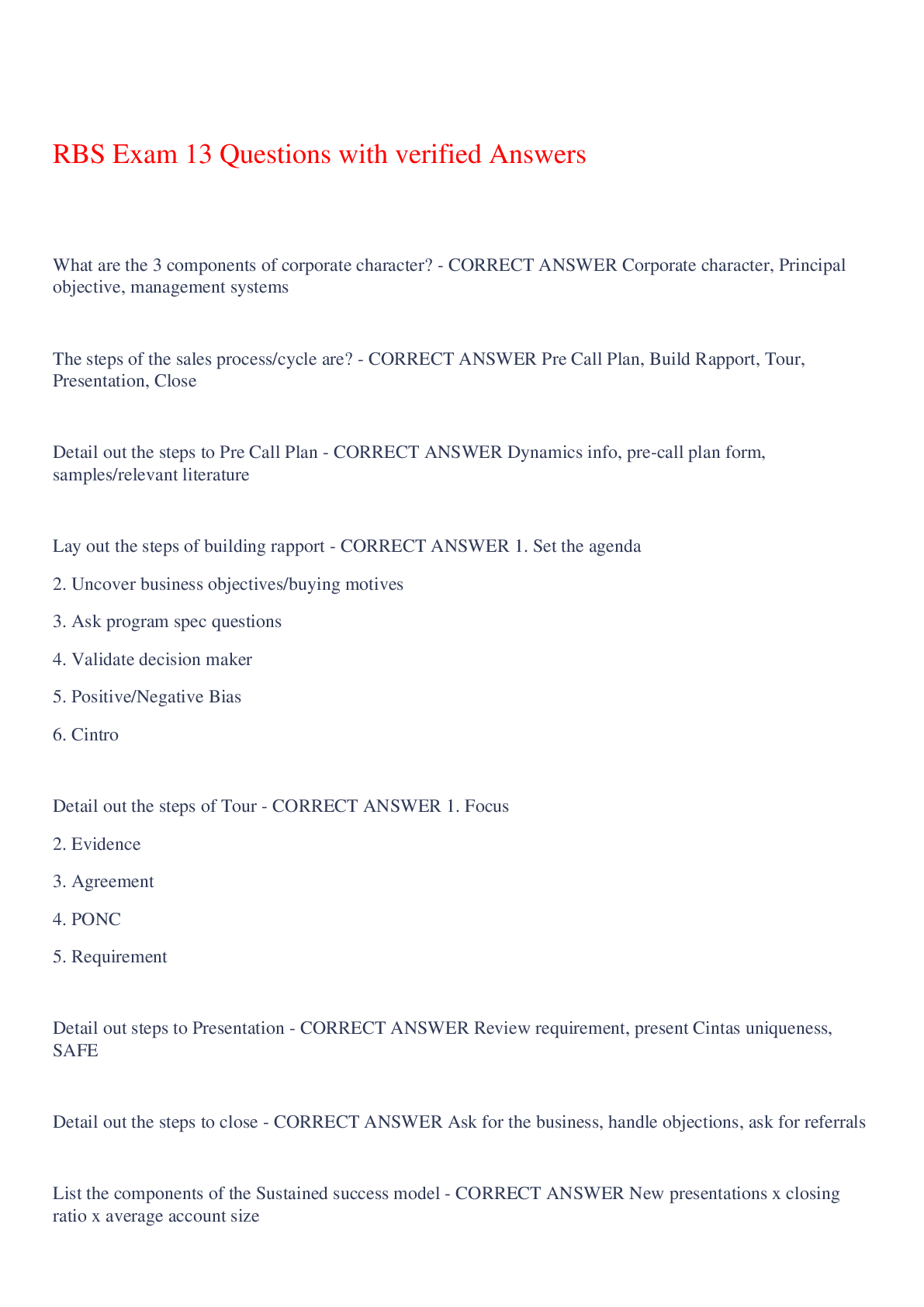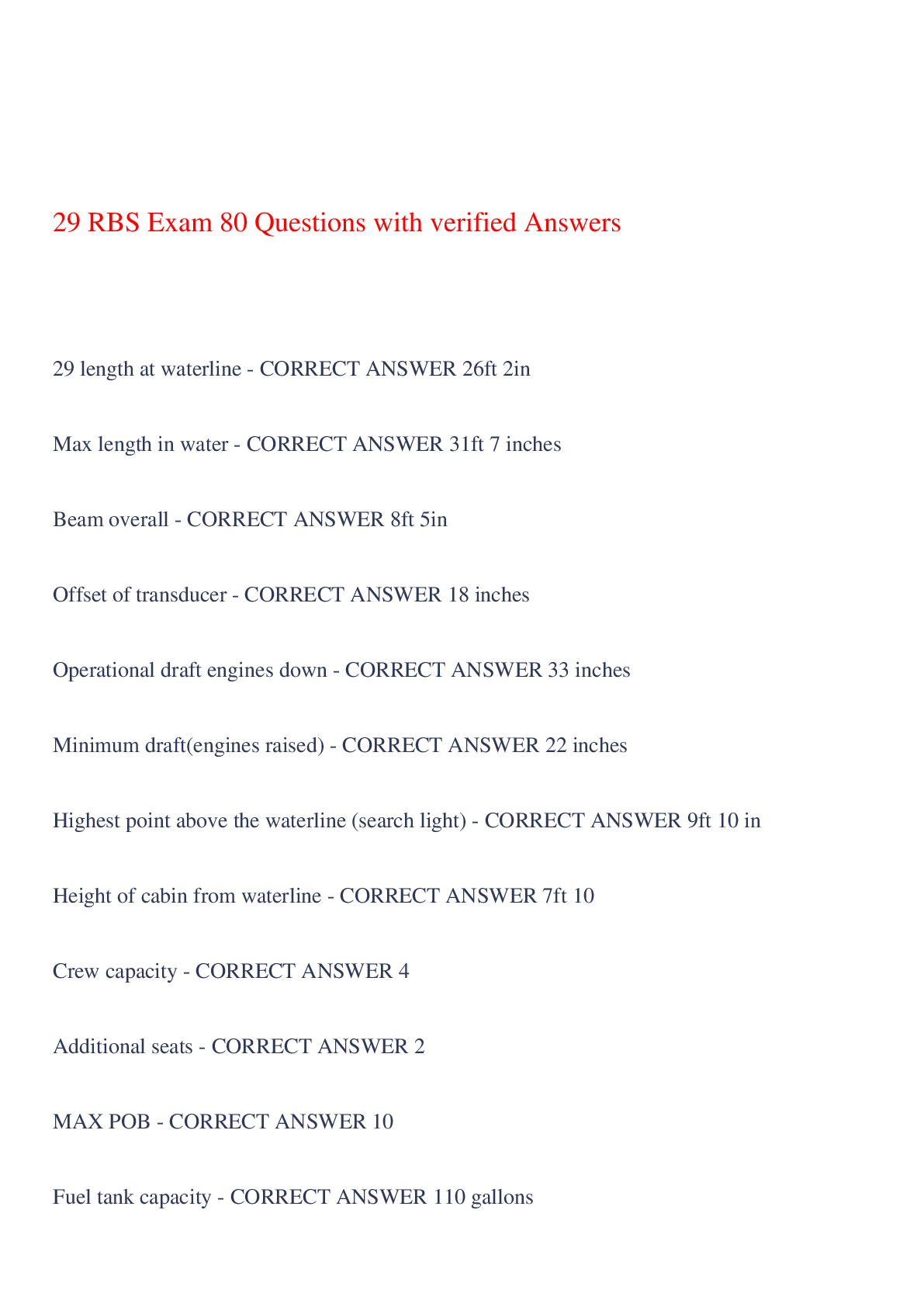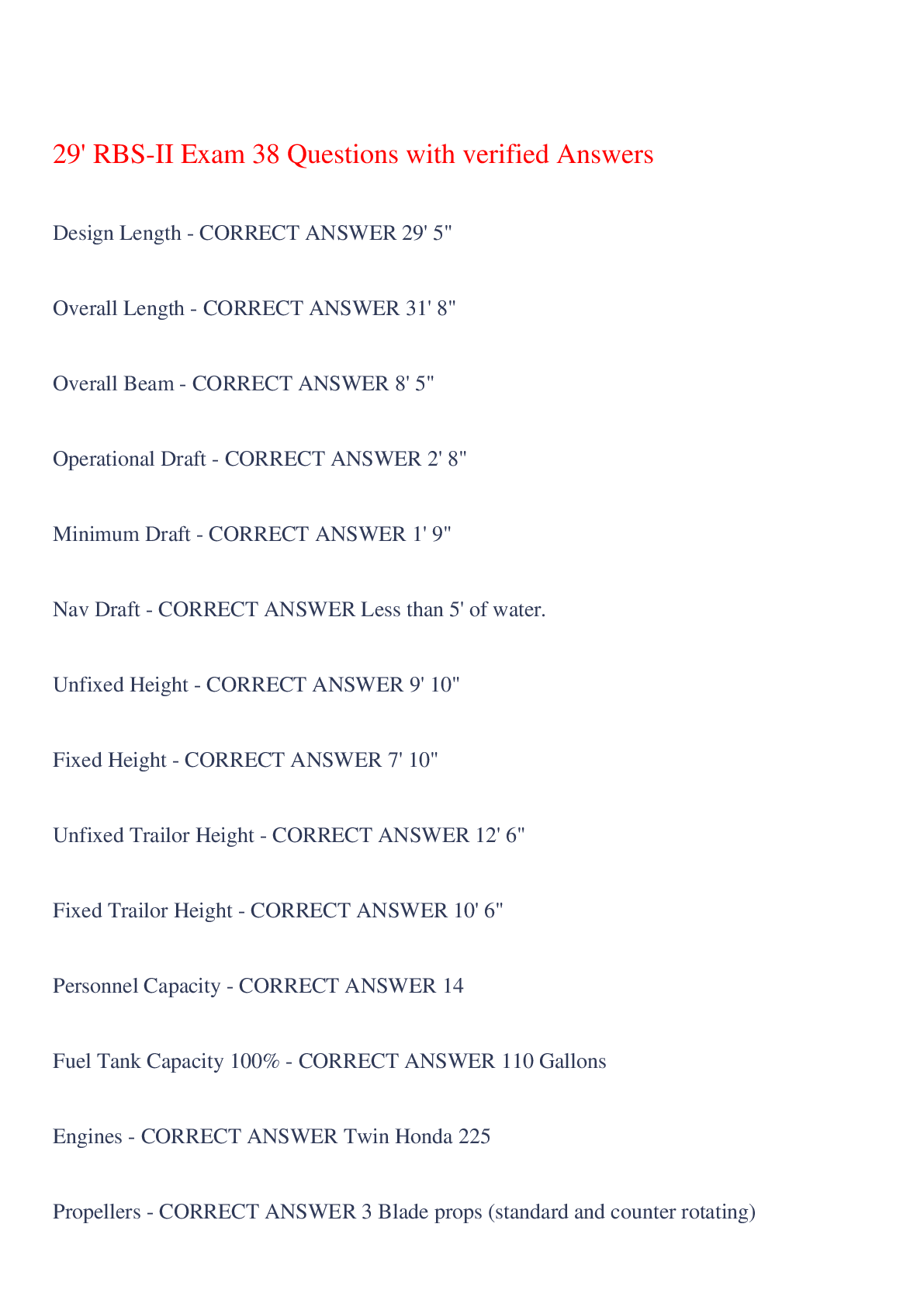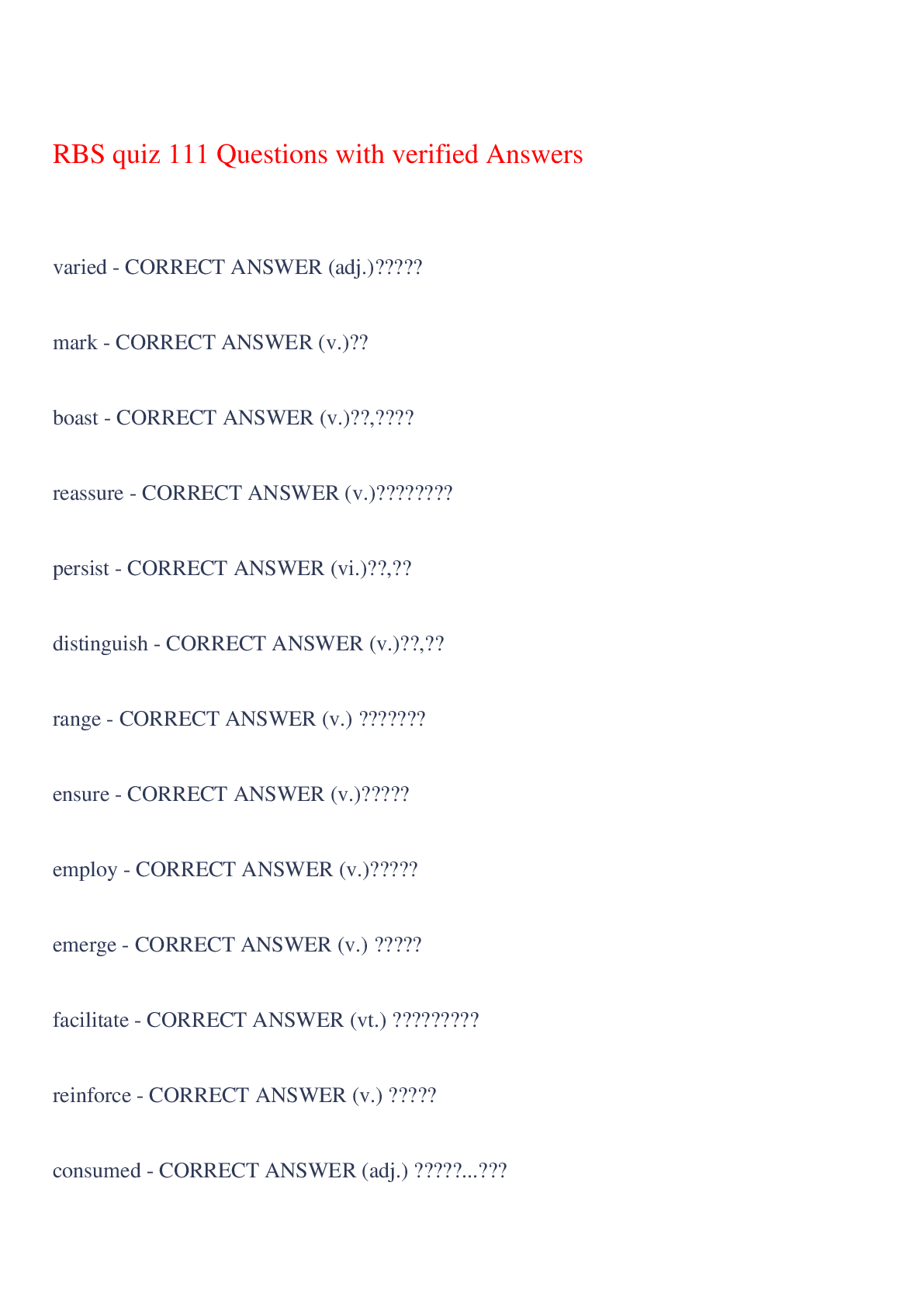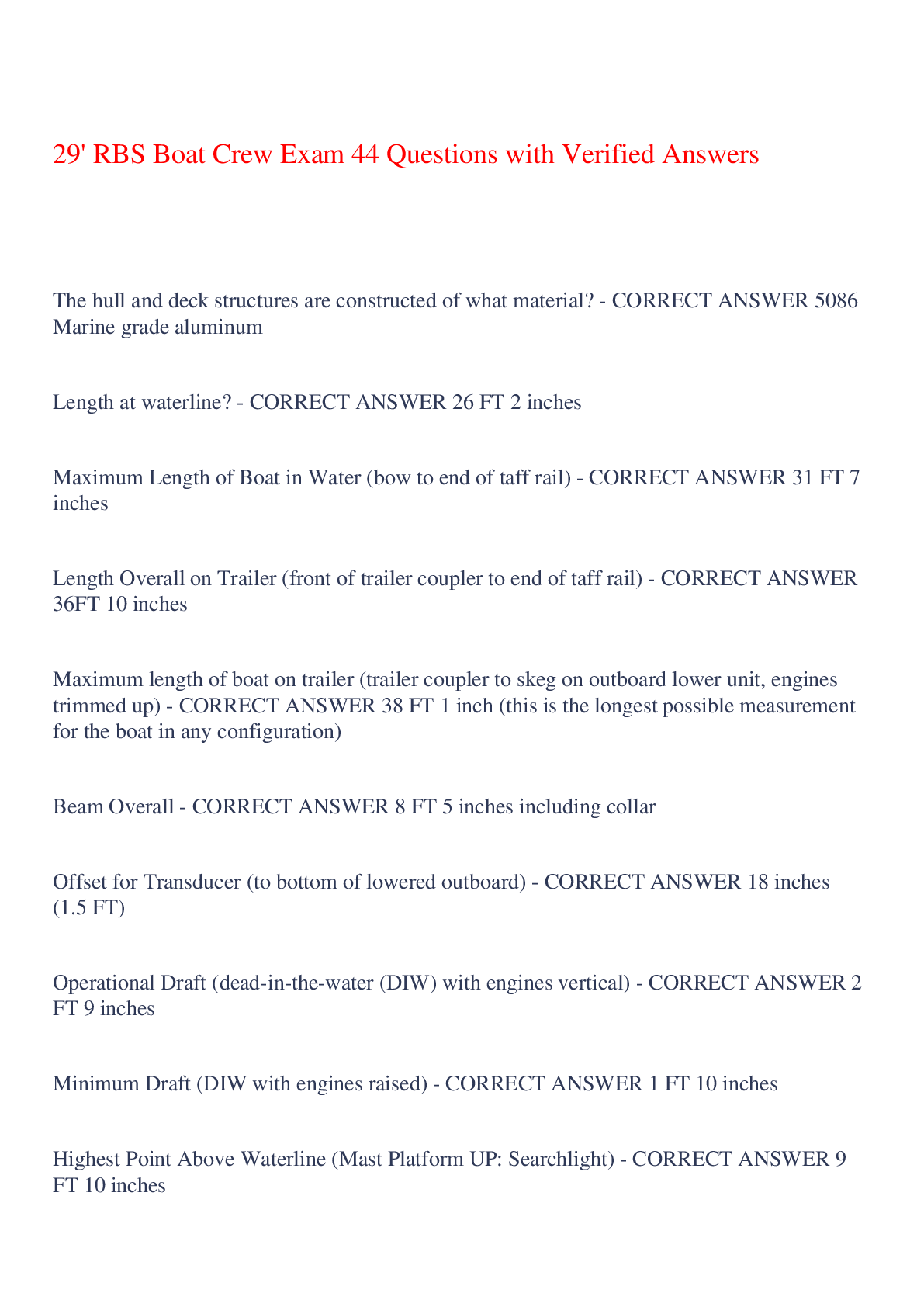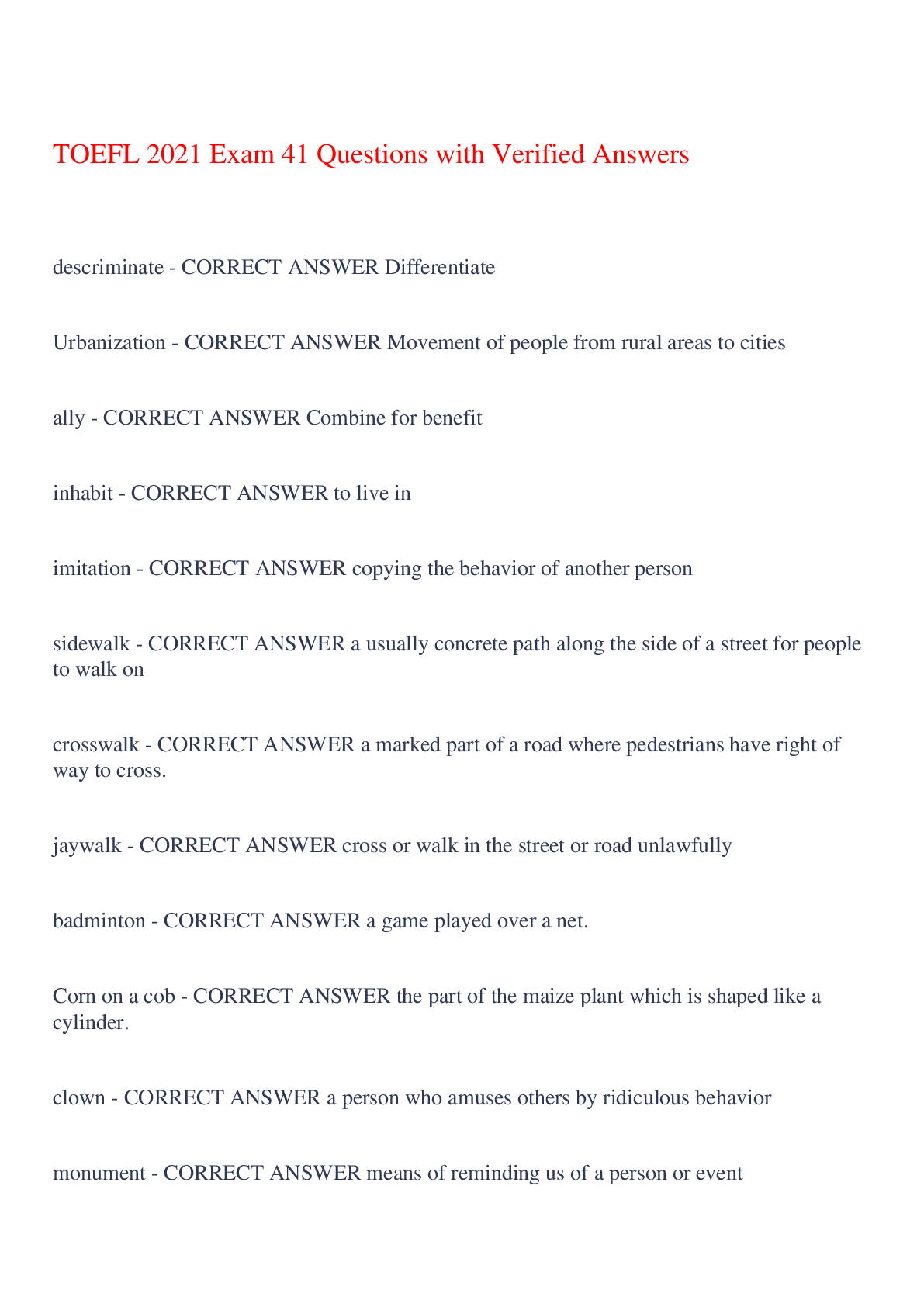Business > EXAM > Software Management Chapter 9|25 Questions with Verified Answers,100% CORRECT (All)
Software Management Chapter 9|25 Questions with Verified Answers,100% CORRECT
Document Content and Description Below
Software Management Chapter 9|25 Questions with Verified Answers Product Owner - CORRECT ANSWER The ____ _____ is the empowered central point of product leadership. It is one of the three collab... orating roles that constitute every Scrum team (the others being the ScrumMaster and the development team). Stakeholders Scrum Team - CORRECT ANSWER Product Owner faces two directions simultaneously at the ____ and the _____ Principal Responsibilities - CORRECT ANSWER Manage Economics Participate in Planning Groom the Product Backlog Define acceptance criteria and verify that they are met Collaborate with the dev team Collaborate with the stakeholders Manage Economics - CORRECT ANSWER P.O. is responsible for ensuring that good economic decisions are continuously being made at the release, sprint, and product backlog levels Release-Level Economics - CORRECT ANSWER At the release level the product owner continuously makes trade-offs in scope, date, budget, and quality as a stream of economically important information arrives during product development Also, at the end of every sprint the product owner oversees a decision as to whether or not to fund the next sprint. If good progress is being made toward the release goal or the next sprint is otherwise economically justified, the next sprint will be funded. If poor progress is being made or the economics don't support additional expenditures, the effort might be canceled. Sprint-Level Economics - CORRECT ANSWER ensuring that a good return on investment (ROI) is delivered from each sprint. Good product owners treat their organization's money as if it were their own money. In most cases the product owner knows the cost of the next sprint (the duration and team composition of the sprint are known). With this knowledge the product owner should ask himself at sprint planning, "Would I write a check out of my own bank account equal to the cost of this sprint to get the features that we're planning to build in this sprint?" If the answer is no, a good product owner wouldn't spend the organization's money either. Product Backlog Economics - CORRECT ANSWER responsible for prioritizing the product backlog Participate in Planning - CORRECT ANSWER The product owner is a key participant in the portfolio-, product-, release-, and sprint-planning activities. Groom the Product Backlog - CORRECT ANSWER The product owner oversees the grooming of the product backlog, which includes creating and refining, estimating, and prioritizing product backlog items. The product owner doesn't personally perform all of the grooming work The product owner also doesn't estimate the items Define Acceptance Criteria and Verify That They Are Met - CORRECT ANSWER The product owner is responsible for defining the acceptance criteria for each product backlog item. These are the conditions under which the product owner would be satisfied that the functional and nonfunctional requirements have been met. Collaborate with the Development Team - CORRECT ANSWER The product owner is an engaged, committed, everyday role. Many organizations just starting to adopt Scrum fail to foster adequate product owner engagement with the development team, delaying essential feedback and substantially reducing the value of that feedback when it does occur. Feature not Phase - CORRECT ANSWER Using Scrum, we build a feature at a time, not a phase at a time. This means that we perform all activities to create a particular feature (design, code, integrate, test) during one sprint. Collaborate with the Stakeholders - CORRECT ANSWER The product owner is the single voice of the entire stakeholder community, internal and external. Internal stakeholders can include business systems owners, executive management, program management, marketing, and sales. External stakeholders can include customers, users, partners, regulatory bodies, and others. The product owner must work closely with the entire stakeholder community to gather input and synthesize a coherent vision to guide product development. Characteristics/Skills - CORRECT ANSWER Domain skills People Skills Decision Making Accountability Domain Skills - CORRECT ANSWER The product owner is a visionary who can synthesize a product vision and lead the team to achieve that vision. is a visionary knows not everything can be anticipated has business and domain expertise People Skills - CORRECT ANSWER A product owner must also be the "voice of the customer," which requires a good relationship with stakeholders. Because there are frequently multiple stakeholders who could have conflicting needs, the product owner must also be a good negotiator and consensus builder. Has a good relationship with stakeholders Is a negotiator/consensus builder Is a good communicator Is a powerful motivator Decision Making - CORRECT ANSWER The product owner must also be willing to make the hard decisions—usually by trading off constraints like scope, date, and budget. These decisions must be made in a timely manner and should not be reversed without good reason IS empowered to make decisions Is willing to make hard decisions Is Decisive Takes an economic view to balance business/technical issues Accountability - CORRECT ANSWER The product owner is held accountable for delivering good business results Accepts responsibility for the product Is committed and available Acts like a Scrum Team Member Finally, the product owner is a member of the Scrum team and therefore realizes that good economic results are impossible without the collaborative efforts of the full Scrum team. So, the product owner treats the development team and Scrum- Master with respect and trusts that they are partners in delivering the desired results. A Day in the Life - CORRECT ANSWER Oversee Grooming -> product backlog Participate in Sprint Planning Answer Questions Participate in Daily Scrum when possible Review Features during sprint execution Participate in Sprint Review and Retrospective After these are completed, the sprint cycle repeats and the product owner participates in the next sprint-planning activity product planning - CORRECT ANSWER where the product owner, working with appropriate stakeholders and others, will perform the envisioning of the new product. At the completion of product planning, the proposed product will be submitted to portfolio planning, where it is subjected to the organization's economic filter to determine if development will be funded and when work can begin. In week 3 the product owner is engaged in initial release planning. This typically involves a PBI-writing (story-writing) workshop that includes internal stakeholders, the development team members, and possibly external stakeholders to generate a high-level product backlog that can be used during release planning. Next, the product owner facilitates an initial release-planning session (longer term planning). Who Should Be a Product Owner? - CORRECT ANSWER Internal development: Representative/customer from the business area benefiting from the solution Commercial development: Internal proxy for the actual customers and users (typically a product manager, product marketer, or project manager) Outsourced development: Representative/customer from the company paying for the solution and receiving the benefits Component team (architectural development): Typically a technical person who can best prioritize the backlog of technical items Product Owner Combined with Other Roles - CORRECT ANSWER If capacity permits, the same person may act as the product owner for more than one Scrum team. Usually it is easier for this person to be the product owner of multiple teams on the same development effort, because the work of these teams will most likely be highly interrelated. Although there are times when the same individual may be the product owner and a member of the development team, it is considered a bad idea for the same person to be both the product owner and the ScrumMaster on the same Scrum team. These two roles counterbalance each other; having one person play both roles creates a conflict of interest that we should try to avoid. Same person as product owner of more than one Scrum team Product Owner Team - CORRECT ANSWER Every Scrum team must have a single person who is identified as the product owner and is the only person empowered and accountable for fulfilling the product owner responsibilities for that Scrum team. To properly apply Scrum, we need ONE individual to be the product owner, making decisions and acting as the single voice of the stakeholder communities to the Scrum team. Forming a product owner team in either of these circumstances is acceptable as long as there is one person on the team who is the ultimate decision maker and as long as having a product owner team does not degrade into design by committee, with every decision needing approval from eight other people. Product Owner Proxy - CORRECT ANSWER is a person enlisted by the product owner to act on his behalf in particular situations. Everyone on the Scrum team knows that the proxy is not the actual product owner, but everyone also knows that the product owner has empowered the proxy to make at least some tactical decisions on his behalf. Chief Product Owner - CORRECT ANSWER is the product owner for the whole product. However, the chief product owner has a team of product owners to ensure that the product owner role is filled correctly at each lower level in the hierarchy. If you choose to use this approach, ensure that the individual team product owners remain empowered to make the vast majority of the decisions at their levels, rather than having to pass such decisions up the hierarchy to be made at higher levels. [Show More]
Last updated: 1 year ago
Preview 1 out of 7 pages
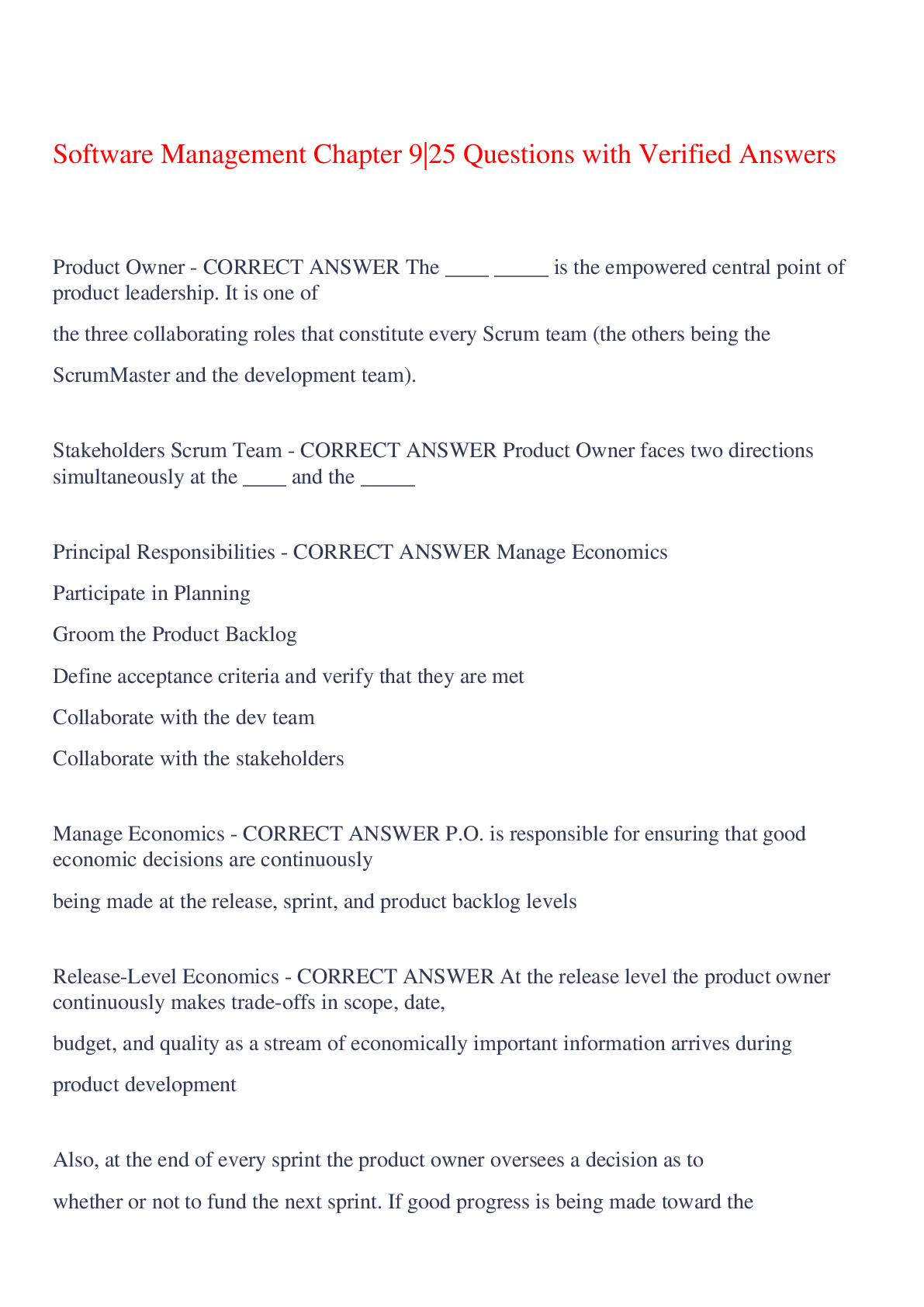
Buy this document to get the full access instantly
Instant Download Access after purchase
Buy NowInstant download
We Accept:

Reviews( 0 )
$7.50
Can't find what you want? Try our AI powered Search
Document information
Connected school, study & course
About the document
Uploaded On
Aug 28, 2023
Number of pages
7
Written in
Additional information
This document has been written for:
Uploaded
Aug 28, 2023
Downloads
0
Views
85


